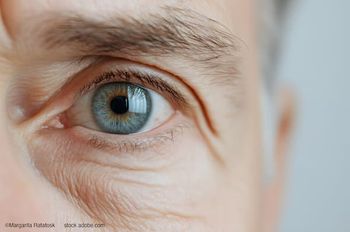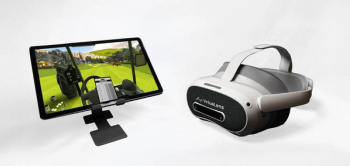
Innovative IOL power calculations gain accuracy
The accuracy of IOL power calculations continues to improve with the use of modern instruments for biometry, updated formulas, and constant optimization. However, unusual eyes still present a challenge, and residual refractive error still occurs in a clinically significant proportion of normal cases, said Giacomo Savini, MD.
The accuracy of IOL power calculations continues to improve with the use of modern instruments for biometry, updated formulas, and constant optimization. However, unusual eyes still present a challenge, and residual refractive error still occurs in a clinically significant proportion of normal cases, said Giacomo Savini, MD.
“In my opinion, it is always wise not to overpromise because approximately 15% of eyes may have a prediction error >0.50 D,” said Dr. Savini, private practice, Studio Oculistico d’Azeglio, Bologna, Italy, and researcher, IRCCS GB Bietti Foundation, Rome, Italy. “In particular, surgeons might advise patients who are choosing a multifocal IOL that a laser enhancement may be necessary to reach emmetropia in up to 10% of cases.”
Dr. Savini said that while the available optical biometers represent different technologies, it is not possible to say that one is more accurate than another.
“More or less, the modern biometers are doing the same job, and the choice among them will not affect the final outcome,” he explained. “In studies we did comparing power calculations using data from three different biometers in five different formulas, the results were very close with a prediction error ≤0.5 D achieved in approximately 80% to 90% of eyes.”
Differences
There are differences, however, in the performance of available formulas, and results from various published studies show that better outcomes are achieved by using the newer formulas that take anterior chamber depth into account for the estimation of the IOL position, Dr. Savini said. Some formulas introduced more recently include the Barrett Universal II, EVO, Hill-RBF, Kane, Naeser, Olsen, Panacea, and Pearl-DGS, and most of those can be accessed for free online.
A recent study by Dr. Savini and colleagues compared the accuracy of 15 IOL power calculation formulas, including many of the newer formulas [Savini G, et al. J Cataract Refract Surg. In press https://www.jcrsjournal.org/article/S0886-3350(19)30641-8/fulltext]. Using data from 150 eyes that were all measured with the same biometer, received the same model IOL, and operated on by one of two surgeons, the analyses showed that the prediction error was within 0.5 D in almost 90% of eyes.
“With seven of the formulas, a prediction error ≤0.5 D was achieved in ≥88% of eyes. Even the older formulas did not do so bad because with their use, about 85% of eyes were within 0.5 D of the intended target, which is still a good result,” Dr. Savini said.
Particularly interesting, however, was the finding that a prediction error ≤ 0.25 D was achieved in the majority of cases (51% to 62%), regardless of the formula used. The best results were achieved with the Kane and Barrett formulas, both of which had a prediction error ≤0.25 D in 62% of eyes.
“As the next frontier, I think we will be classifying performance of IOL calculation formulas by the percentage of eyes with a prediction error lower than 0.25 D instead of 0.50 D,” Dr. Savini said.
Special cases
Nevertheless, it is still necessary to be careful in long and short eyes. In a paper published by Kane et al. [Kane JX, et al. J Cataract Refract Surg. 2016;42(10):1490-1500], a prediction error within 0.5 D of target was achieved in only about 60% of eyes that had an axial length <22 mm or >26 mm. Another recent paper reported that in hyperopic eyes with an axial length <22 mm, the Barrett Universal II was no more accurate than older formulas and resulted in a prediction error ≤0.5 D in less than 50% of eyes [Shrivastava AK, et al. J Cataract Refract Surg. 2018;44(11):1317-1320].
Eyes with keratoconus also present a challenge for achieving accurate refractive outcomes. The problem was highlighted by the findings of a retrospective analysis performed by Dr. Savini and colleagues that compared prediction errors occurring with the Barrett Universal II, Haigis, Holladay 1, Hoffer Q, and SRK/T formulas and dividing eyes according to keratoconus stage [Savini G, et al. J Cataract Refract Surg. 2019;45(5):576-581]. The results showed that all of the formulas were associated with a hyperopic result. The lowest mean arithmetic errors occurred with the SRK/T.
“Although the findings of this study were unexpected, in my opinion, the explanation for why the SRK/T performed best is that it trends toward resulting in a myopic outcome,” Dr. Savini noted. “Therefore, the error with the SRK/T compensates for the hyperopic error that generally occurs in keratoconic eyes.”
Dr. Savini pointed out that a solution will require more sophisticated methods for biometry.
Optimizing outcomes
Dr. Savini also emphasized the importance of constant optimization for improving refractive outcomes with IOL implantation. The process has been demonstrated to result in an increase in the percentage of eyes with a residual refractive error within 0.5 D of target and in lower overall mean and median absolute errors.
Surgeons using published formulas can do the optimization themselves by back-calculating for each patient the constant that would have resulted in zero prediction error and then averaging the constant values for a series of patients. Surgeons using unpublished formulas could contact the developers who may perform the calculations for them.
Most optical biometers have integrated software to perform the calculations, and that involves entry of the IOL power used and the postoperative refraction.
“I suggest all surgeons take the time to optimize their constants so that they can achieve the best outcomes,” Dr. Savini concluded.
Disclosures:
Giacomo Savini, MD
E:
This article is based on a paper presented by Dr. Savini at the 37th Congress of the European Society of Cataract and Refractive Surgeons. Dr. Savini is a consultant to, a speaker for, and/or receives research support from companies that manufacture IOLs and instruments for biometry.
Newsletter
Don’t miss out—get Ophthalmology Times updates on the latest clinical advancements and expert interviews, straight to your inbox.














































.png)


